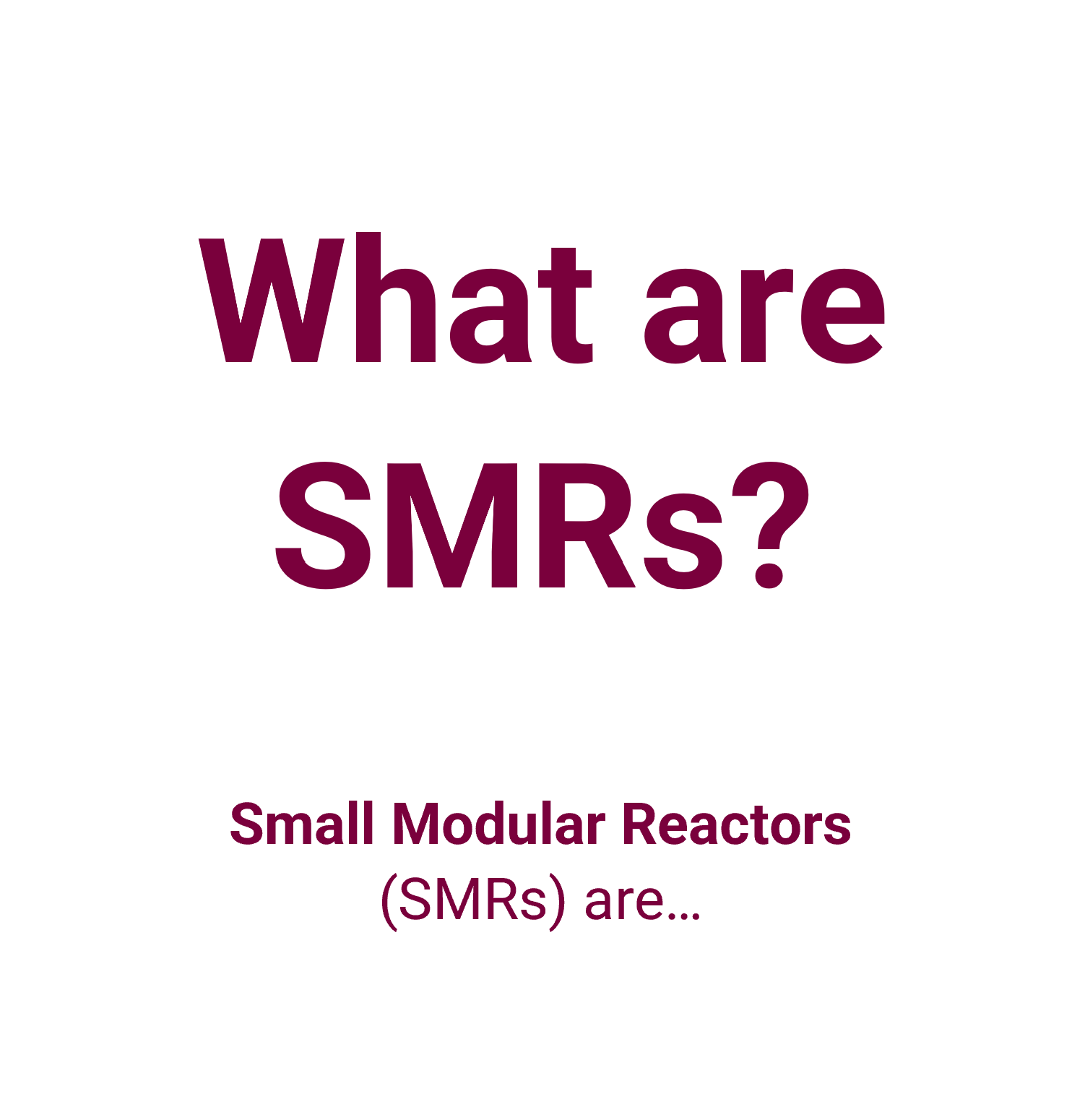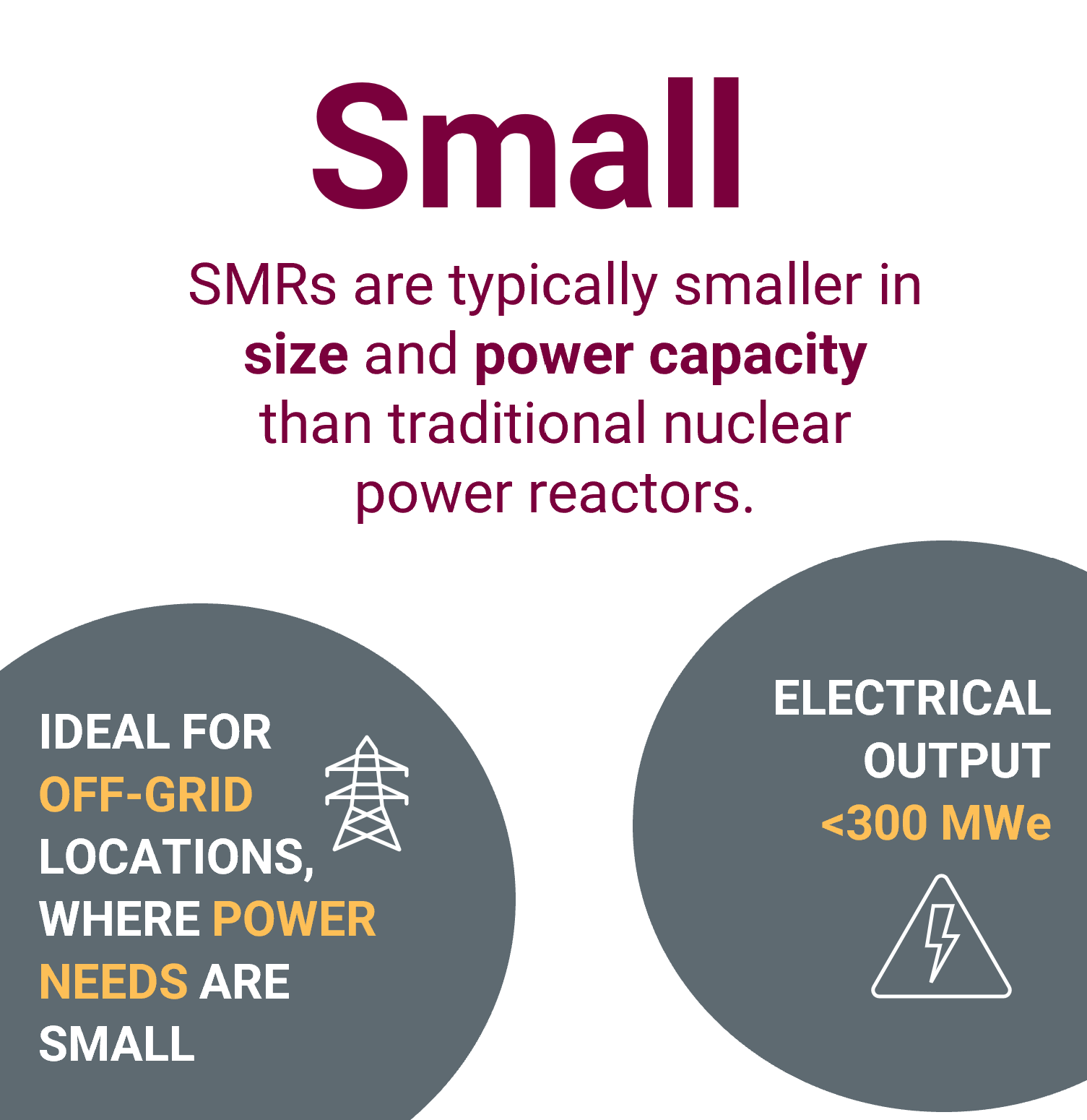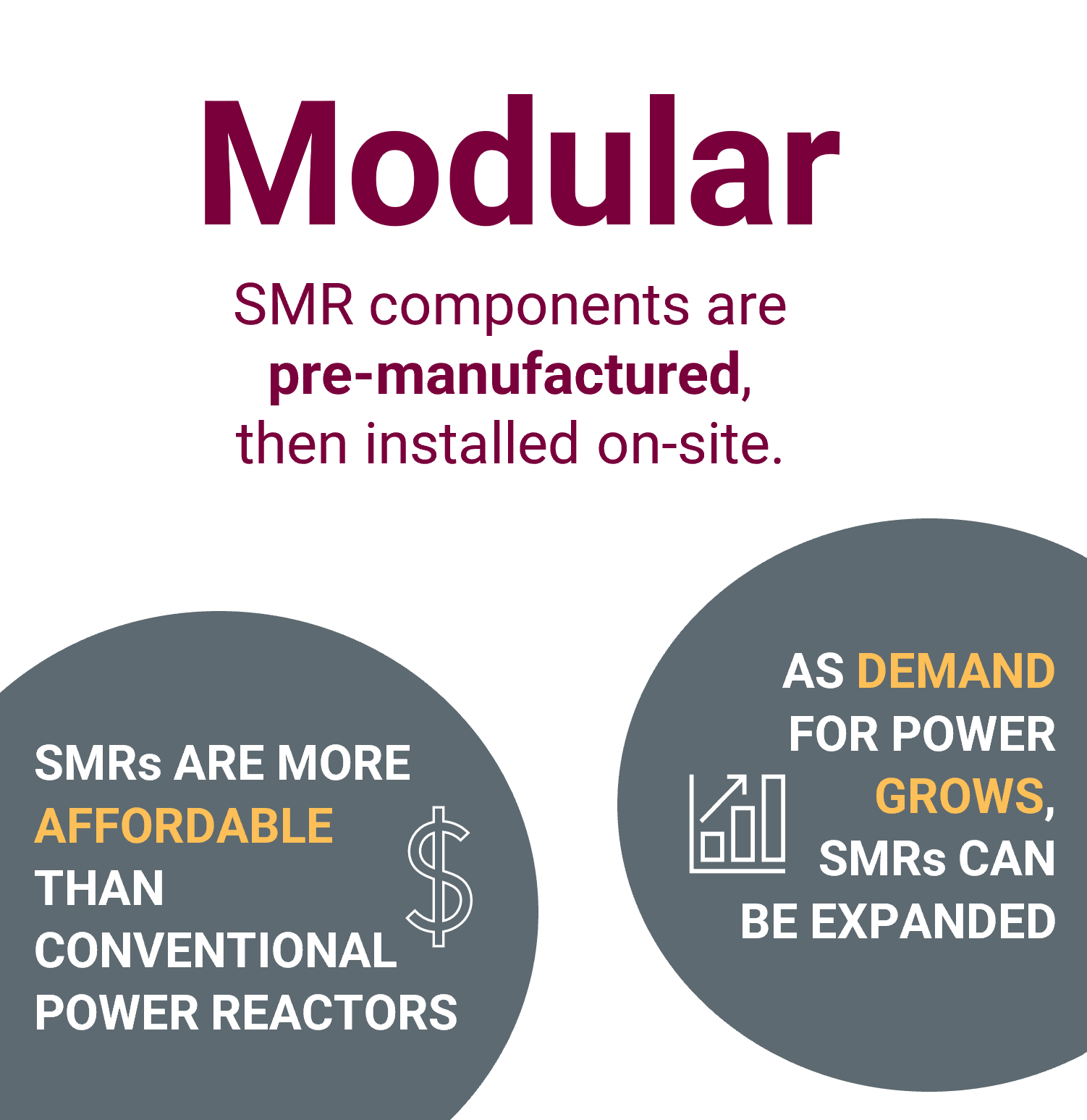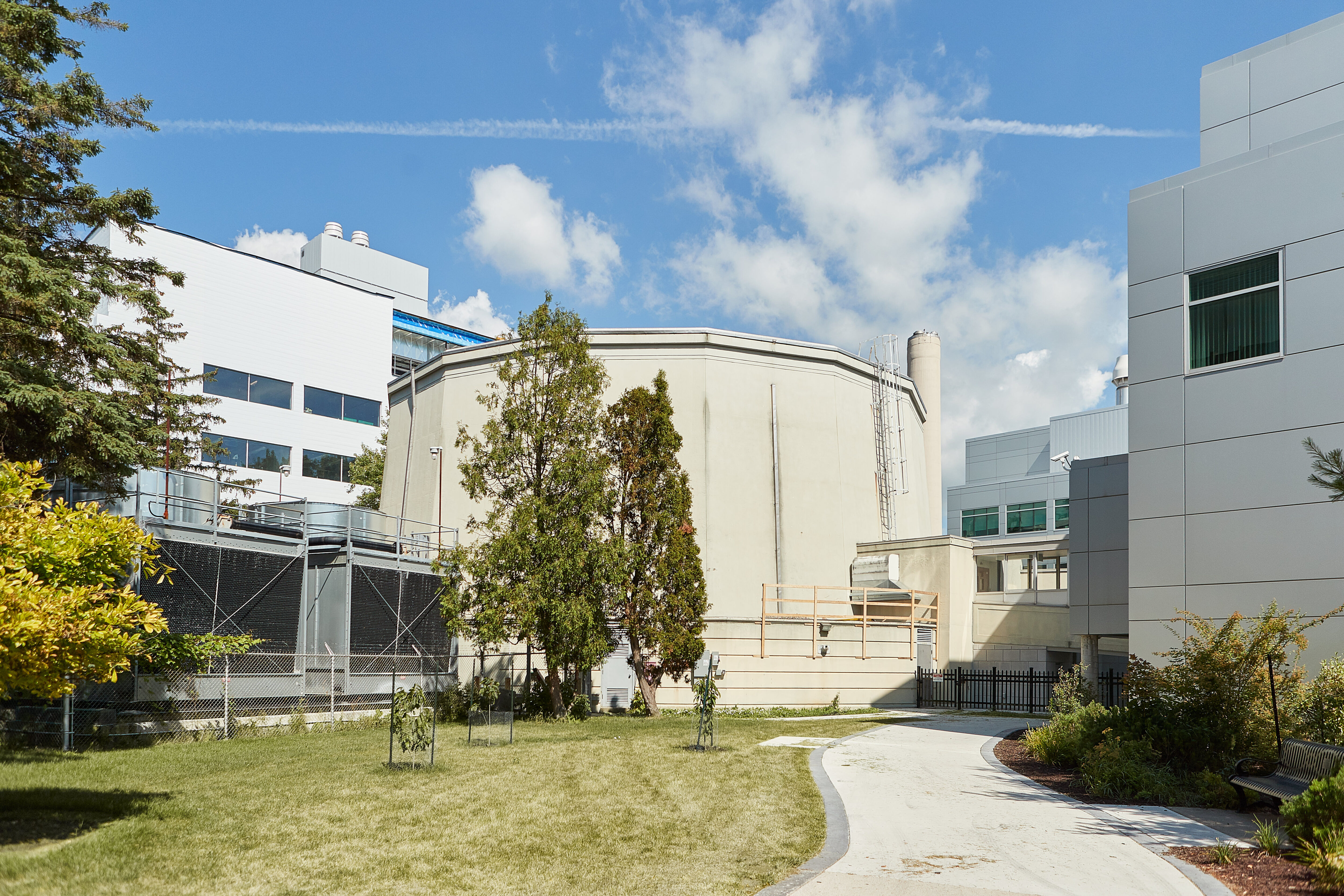
What are SMRs and how will they benefit Canadians?
Small modular reactors (SMRs) are nuclear fission reactors. As their name suggests, SMRs are smaller than traditional nuclear power reactors. While conventional power reactors have a power capacity of 700+ megawatts of electricity, or MWe, SMRs typically have an electrical power output of 300 MWe or less. Small modular reactors can be used for a variety of purposes, including electrical power generation, radioisotope production, and materials research.
SMRs are ideal for installation in remote locations, where power needs are small. They can provide heat and power to homes, businesses, and natural resource industries. SMR components can be manufactured in factories and shipped to sites for assembly. This arrangement is much more cost and time-effective than custom-building a nuclear reactor for a particular location. It also means that SMRs can be added to large power grids as demands for electricity grow. Additionally, SMRs can be built based on standardized designs with inherent safety characteristics, and they may be installed underground, which increases security.



In addition to providing low-carbon electricity, SMRs have the potential to benefit Canadians in a myriad of ways, including facilitating the creation of a new industrial sub-sector, anchoring cutting-edge research in Canada, and placing Canada at the center of a global export market. Conservative estimates from Natural Resources Canada place the potential value for SMRs at $5.3B between 2025 and 2040. Globally, the SMR market is much bigger, with a conservative estimated value of $150B between 2025 and 2040.
The Canadian government announced its SMR Action Plan in 2020. The plan recognizes the potential economic, geopolitical, social, and environmental benefits of small modular reactor technology, and brings together key enablers across Canada who will lead the development, demonstration, and deployment of SMRs in Canada and abroad.
How will SMRs be regulated in Canada?
The Canadian Nuclear Safety Commission (CNSC) regulates the use of nuclear energy and materials in Canada to protect the health and safety of Canadians and the environment. As Canada’s nuclear regulator, the CNSC is prepared to regulate SMR facilities. All reactor facilities, including small modular reactors, are classified as Class IA nuclear facilities under the Class I Nuclear Facilities Regulation. This means the CNSC would apply the same criteria used in the regulation of traditional nuclear facilities to SMRs.
Learn more: Small modular reactors – Canadian Nuclear Safety Commission
What is McMaster’s role in Canada’s SMR Action Plan?
In December 2020, McMaster University announced it would be contributing a chapter to Canada’s SMR Action Plan, with a proposal to undertake a SMR Deployment Feasibility Study.
In consultation with community, business and government stakeholders, including Indigenous communities and municipal councils, the study will build on McMaster’s expertise in SMR technology validation, nuclear safety, waste reduction, nuclear security and site monitoring, and integrated urban energy systems. The study will also evaluate the possibility of McMaster hosting an SMR on- or off-campus.
Teams of researchers, including faculty and students from across all disciplines, will take a holistic approach to investigate the most appropriate SMR technology, addressing safety, security and environmental impacts of site selection; economic and technical aspects of selling excess electricity to the grid; social impacts and public acceptance of nuclear energy technologies.

Is McMaster Nuclear Reactor (MNR) a Small Modular Reactor?
The McMaster Nuclear Reactor (MNR) is not a small modular reactor. MNR is not a ‘modular’ reactor, as it was custom-built on the University campus in 1959. With a maximum thermal power output of 5 MWe, MNR is commonly categorized as a microreactor.
While McMaster Nuclear Reactor is not technically an SMR, it is a nuclear fission reactor that has been a central part of the University campus for over 60 years. McMaster’s expertise in reactor operations and safety make the University well-equipped to conduct SMR research. As part of Canada’s SMR Action Plan, McMaster University is exploring the possibility of establishing an SMR on- or off-campus to enable further research into SMRs and potentially provide electricity to surrounding areas.
